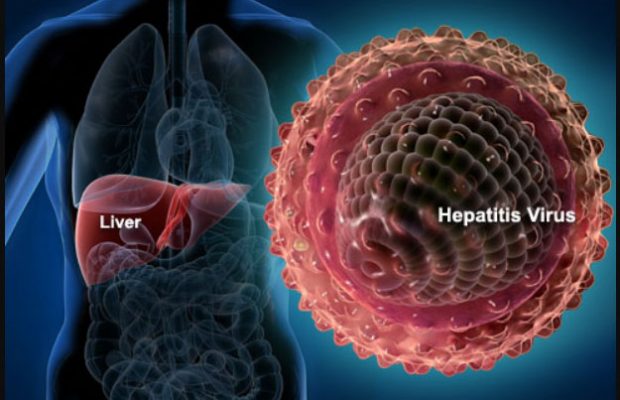
Human anatomy is complex. Liver is the largest and the amazing organ that protects, filters, breaks substances, detoxifies body by filtering harmful substances, plays a role in clotting, and produces bile juice and many more. Hepatitis is a two letter word derived from Greek words “hepat” meaning liver and “itis” meaning inflammation. By the definable sense it means irritation or the inflammation of the liver.
Hepatitis is caused by different viruses, mostly known from hepatitis A to E. Hepatitis Viruses include cytomegalovirus (CMV), Epstein Barr Virus (EBV), Herpes Simplex Virus etc.
Hepatitis Symptoms Commonly seen
Hepatitis Symptoms vary from being acute to chronic. Most commonly deprives of the following:
- Flu like symptoms
- Diffuse pain in the abdomen
- Nausea
- Vomiting
- Jaundice
- Muscle and joint pains
Note: Most commonly patients have symptoms of Jaundice that is concerning the health care professionals causing yellow or pale skin and eyes that’s a sign that the liver is unable to perform its functions properly.
The hepatitis signs and symptoms may sometimes vary from one person to another due to other prevailing medical condition existing in their body .
Causes of Hepatitis / Factors contributing Hepatitis
Let us understand the causes of hepatitis –
- Types of virus
- Age of the patient
- Health of the patient
- Status of immune system of the patient
|
|
Hepatitis A |
Hepatitis B & D |
Hepatitis C |
Hepatitis E |
|
Type |
RNA |
DNA |
RNA |
RNA |
|
Incubation |
30 days |
90 days |
40 days |
50 days |
|
Route |
Faeco-Oral |
Parental |
Parental |
Faeco-Oral |
|
Severity |
Mild |
Severe |
Mild |
Mild |
|
Chronicity |
None |
10% |
50% – 60% |
None |
Hepatitis Transmission Routes
Faeco–Oral: This is when an infected person excretes the virus in the faeces and that comes in contact with food and water passing on the virus to another person. This is also called Entral route of transmission.
Parental: This is when the infection does not include the transmission through the human gut. It might be through subcutaneous, intravenous, and intramuscular.
Alcohol: Patient is told to have alcoholic hepatitis when there is a rapid acute liver failure in response of rapid alcohol intake. It is really a spectrum of diseases it some scenarios it can be mild also can be life threatening. There isn’t much treatment options available except for IV steroids in which very few patients spontaneously improve, however large number of patients die.
Hepatitis Pathophysiology
Let us understand more about how hepatitis happens , how it affects etc .
How these viruses damage the liver?
Once these viruses enter the human being by any mode of transmission they find a special efinity for the liver cells. They reach the liver through the circulation and once inside the liver these cells inaculate into the hepatocytes which are the cells of the liver. The liver is made up of large cells of hepatocytes, which are arranged in clusters called lobules once these cells reach into the liver they multiple because it is very convenient environment for growth and multiplication of these viruses.
Now, the growth of these viruses doesn’t lead to liver damage, what actually happens is that these viruses lead to change in the antigen structure on the surface of the hepatocytes. Due to this the body recognizes these hepatocytes are foreign and starts destroying by a mechanism called “self mediated immune damage”. Body starts destroying as many hepatocytes as possible by the mechanism of apoptosis, necrosis, and fibrosis. This is fine in case of acute infection ie; in case of hepatitis A & E as these viruses do not have chronic infection potentials. These viruses are dormant inside the cells of the liver ultimately reactivate and damage new cells of the liver. Self destruction restarts causing liver cell damage, fibrosis, and distortion of liver architecture causing deterioration of the liver function and since liver performs so many vital functions for the body it presents so many clinical symptoms once the damage is more than expected.
Clinical features of Hepatitis – three phases
Predormal symptoms: Also called Viremia, ie viruses in the blood due to which body releases chemicals like IL1, TNF, causing flu like symptoms. Some patients may also get rashes on the skin from here they step into the next phase.
Read Also : Stress Reduction Guide For Healthy Lifestyle
Icentric Phase: This is called the phase where the liver damages. The patients develop jaundice both unconjugated and conjugated (bile duct damage). The most important symptoms include dark urine as unconjugated bilirubin leaks into the blood and hepatomegaly ie; enlargement of liver due to inflammation. After this phase the patient steps into the third phase.
Recovery phase: this is also called the Convalescent phase where the symptoms become mild and gradually improve. Liver size returns to normal, appetite improves, jaundice decreases, stool and urine color return to normal.
Hepatitis Types
There are basically 5 types of Hepatitis –
Hepatitis A – This viral hepatitis can take Entral route of transmission .HAV (Heptatitis A virus ) is the cause of transmission .
Hepatitis B – It is most common type of Hepatitis , this can spread through coming into contact with infectious fluids like vaginal discharge , semen , using razor of hepatitis B affected person etc .
Hepatitis Treatment
Hepatitis A: Vaccine available antiHV IgM or IgG to diagnose, post exposure immune globulin (2 weeks after exposure), acute only.
Hepatitis B: HBsAg (infectious) and anti HAV (immune), Vaccine available antiHV acute and chronic.
Hepatitis C: No drug available, acute and chronic.
Hepatitis D: Occurs in a person with hepatitis B. No vaccination available, but advantageous for the patient who receives hepatitis B vaccine both acute and chronic.
Hepatitis E: No vaccination available. It causes complications in pregnant women mostly in developing countries, acute only.
Alcoholic Hepatitis: It can be mild, but some scenarios become life threatening. IV steroids, if unimproved only supportive medical care can be provided, unfortunately only few improve. There is another option available for patients effected with severe alcoholic hepatitis and that’s the possibility of a lifesaving liver transplant. Unfortunately, in the US patients have not been considered for liver transplant because of the six month waiting period. The rule says you cannot have a liver transplant unless you are sober for six months waiting period and the rule is now being challenged. After the liver transplant the patient is treated with behavioral modification with the psychotherapist or even pharmacological interventions with the drugs that have been known to reduce cravings for alcohol.
Do’s & Dont’s in Hepatitis :
- If you have Hepatitis, then ensure you are consulting your doctor and taking the exact guidelines as he prescribes . Ensure that you make regular checkups and maintain a charted healthy diet as recommended by your Hepatitis Doctor and dietician.
- Encourage that even your loved ones to get Hepatitis tested.

















0 comments